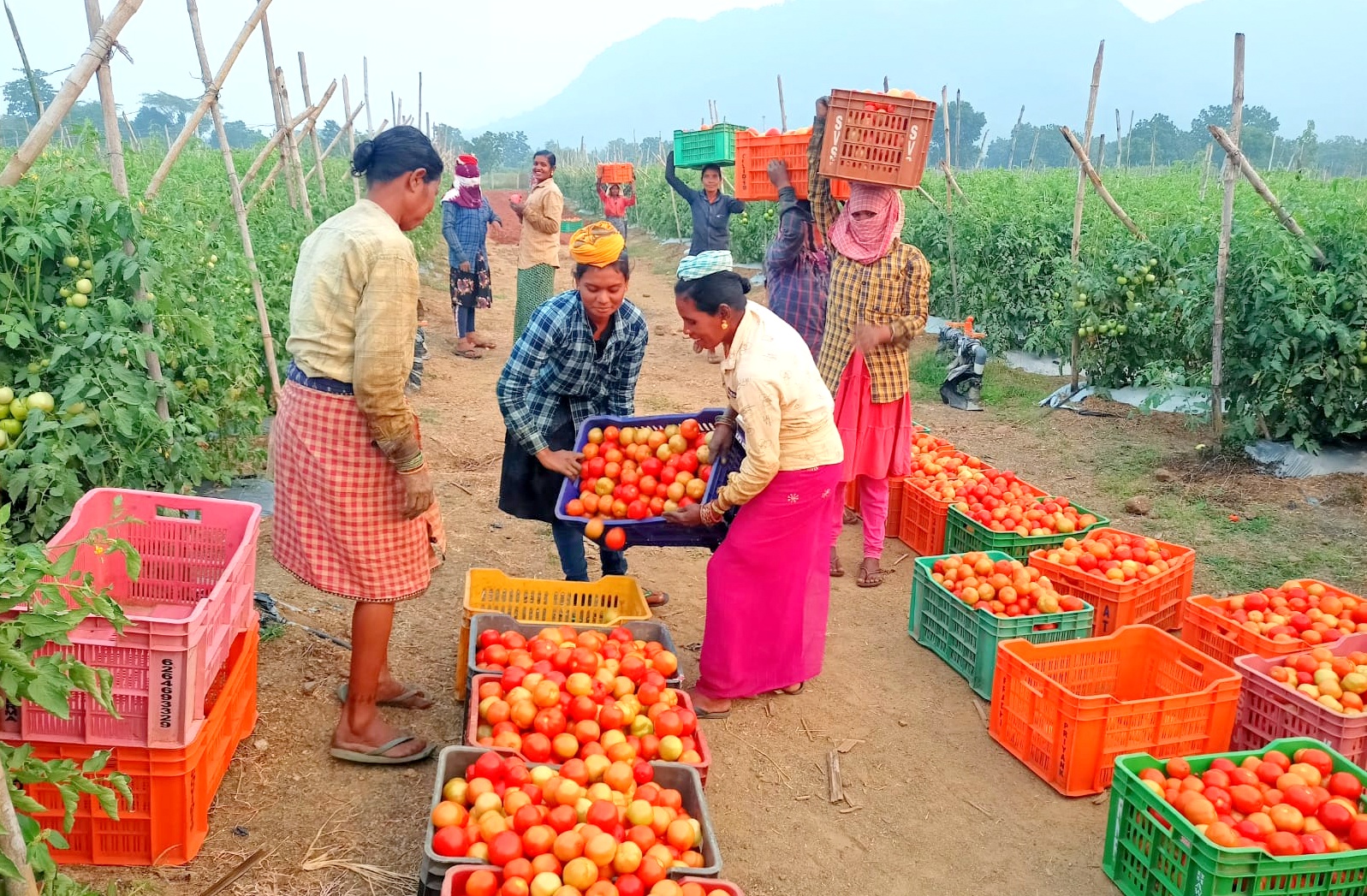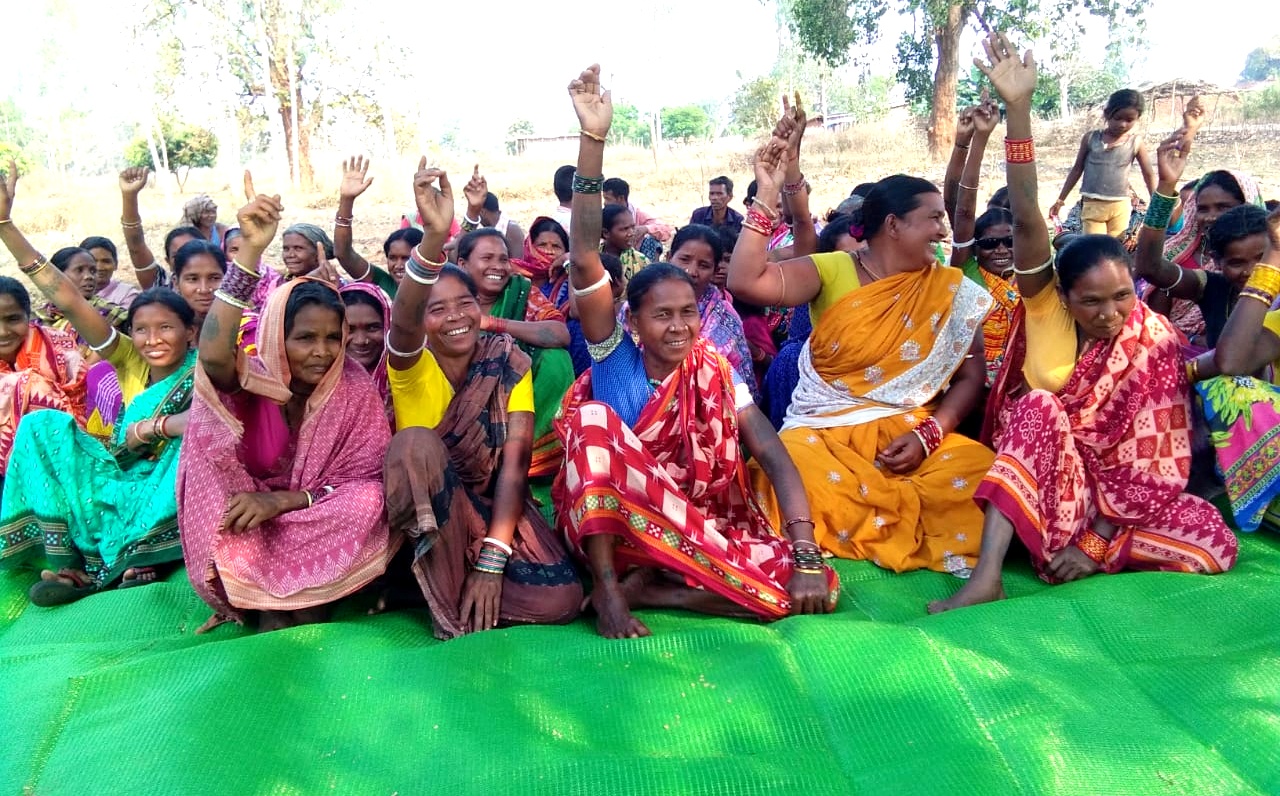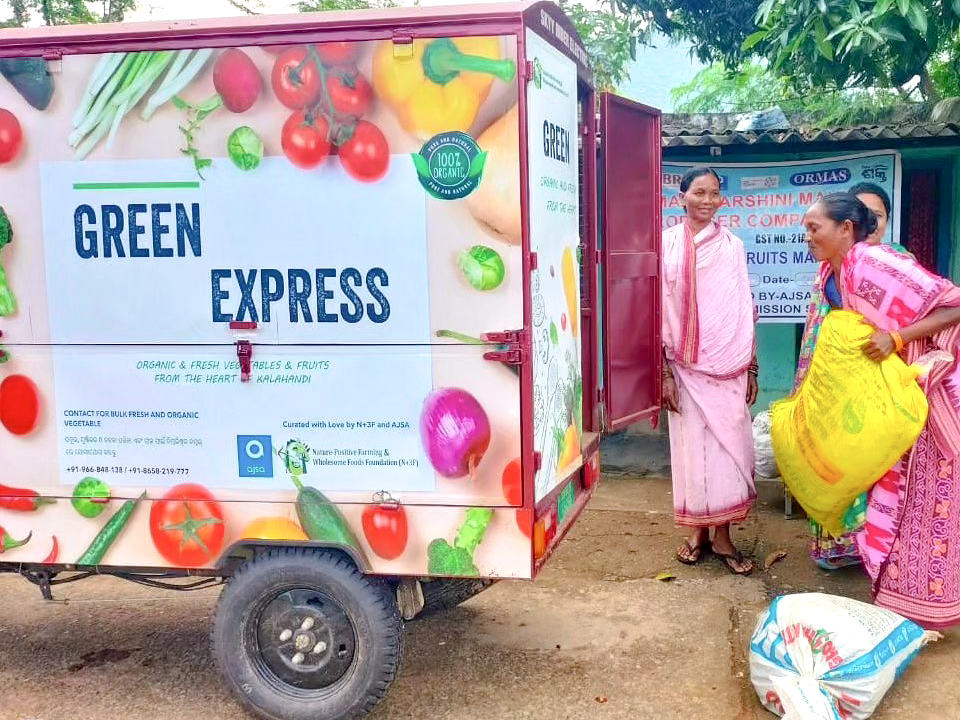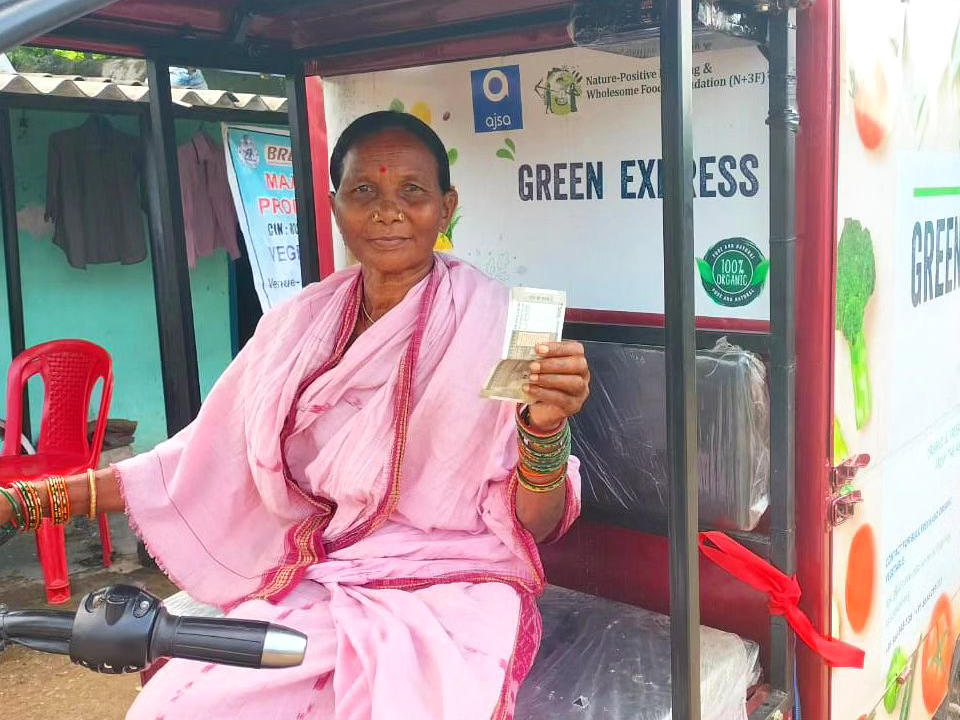From Famine to Leadership: Women Farmers Transform Kalahandi
Organization: AJSA India
2025 LOCAL ADAPTATION CHAMPIONS AWARD WINNER
Once infamous for drought and famine in the 1980s, Kalahandi in India’s Orissa district is today emerging as a surprising hub of women-led climate resilience. At the center of this transformation is an initiative by AJSA India, which is organizing thousands of tribal women farmers to take charge of agriculture, markets, and community leadership in one of India’s most climate-vulnerable districts.
Women farmers make up the backbone of Kalahandi’s agricultural labor force, responsible not only for sowing and harvesting but also for feeding their families and managing their households. Yet despite their central role, they face deep barriers: little or no ownership of land, limited access to credit or irrigation, dependence on exploitative middlemen, and almost no say in community decision-making.

AJSA India began working alongside tribal women farmers to chart new paths in agriculture and community leadership. The model begins with women themselves. Through village consultations, they identified their greatest barriers: unreliable irrigation, exploitative middlemen, and poor access to markets.
More than 3,500 women farmers were organized into over 50 women-led Producer Groups and one Producer Company. Together, they collectively cultivate over 562 acres of land. Crops like tomato, brinjal, onion, capsicum, and paddy are grown in synchronized cycles, reducing risk while ensuring steady supply for markets.
Farming methods are only part of the story. Women received training in non-pesticide management, water harvesting, and agro-ecological practices to adapt to erratic rainfall and longer dry spells. At the same time, they stepped into governance roles, deciding what to plant, how to manage funds, and how to run logistics.
The impact reaches far beyond fields and markets. Elected women leaders now manage procurement, negotiate with vendors, and oversee operations. For many, these are firsts. Women who once had no say in household matters now sit as board members, market negotiators, and community trainers. They are role models for daughters who see them not only as caregivers, but as leaders shaping the future of their villages.

Innovation on Wheels: The Green Express
For years, women farmers grew healthy crops only to watch them spoil for lack of timely transport. Middlemen dictated prices and profits. That was until the women introduced the Green Express—a fleet of electric carts owned and operated by the Producer Groups.
These carts transformed market access. Women could transport vegetables early in the morning or late in the evening, reduce losses, and negotiate better prices with fresher produce. Some women even learned to drive and repair the vehicles, gaining both mobility and confidence.
During the COVID-19 lockdowns, the Green Express became a lifeline. Women supplied fresh produce worth 5.5 million Indian Rupees to hospitals and relief centers, proving the resilience and adaptability of their model under crisis.
More than a practical solution alone, the Green Express has become a symbol of women steering their own futures. A symbol of climate resilience led from the ground up. And a symbol of how empowering women farmers strengthens entire communities


Women Farmers as Architects of Resilience
The story of AJSA India’s work in Kalahandi is not simply about better harvests or new tools, but about shifting power. By scaling the initiative to 40 additional villages and organizing more than 5,500 women farmers into Producer Groups, securing resources through government schemes, and embedding transparency in every financial decision, the initiative has placed women at the center of agriculture and community leadership. Through synchronized cropping, climate-resilient practices, and innovations like the Green Express, women farmers have reduced losses, increased incomes, and strengthened their voice in both households and markets.
What makes this model stand out is not just its impact on livelihoods, but its effect on social norms. Women now lead dialogues with government officials, manage collective resources, and monitor their own progress. In a region long defined by vulnerability, these women are charting a new narrative. One where resilience is locally led, accountability is community-owned, and the future is shaped by the very people who live and labor on this land.